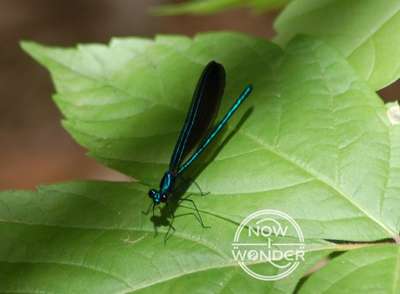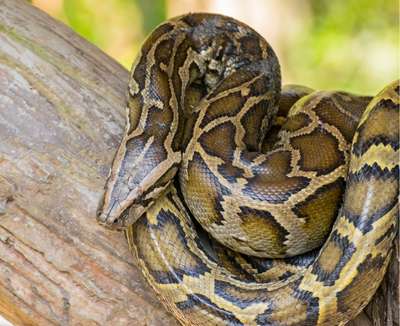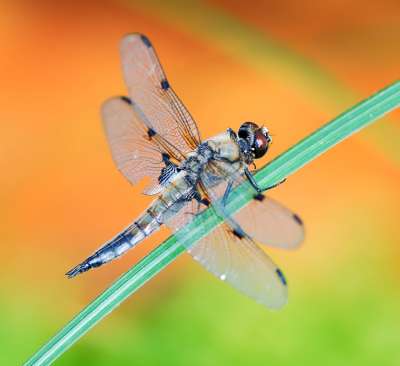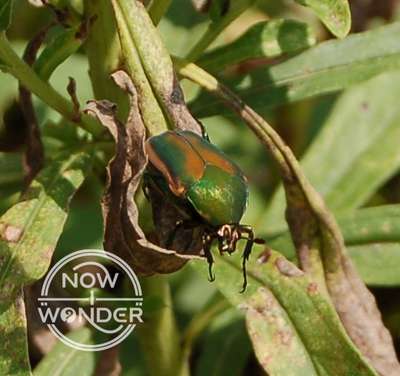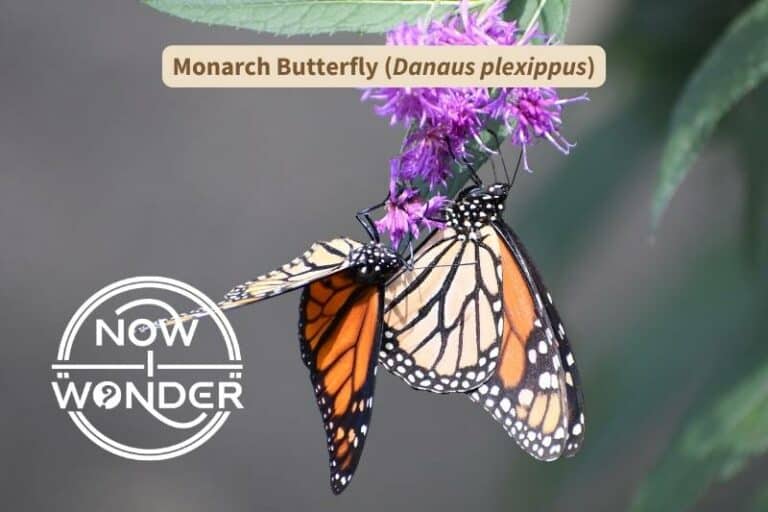When it comes to cool and creepy creatures like spiders, it’s always fun to learn about the biggest and baddest species in your area. But what happens when the biggest species is elusive or rare? In that case, you might have more fun learning about the biggest spiders you might actually see. So what are the biggest, common spiders in North Carolina?
The four biggest, common North Carolina spiders are females of the following species (smaller to largest): marbled orbweaver (Araneus marmoreus), southern house spider (Kukulcania hibernalis), rabid wolf spider (Rabidosa rabida), and yellow garden spider (Argiope aurantia).
To meet the biggest spider species found in North Carolina, check out this other Now I Wonder post all about the Carolina wolf spider (Hogna carolinensis) “Meet North Carolina’s biggest spider“. But if you’d like some advance warning about four of the biggest spiders you’re likely to actually encounter face-to-face in North Carolina, keep reading.
Yellow garden spiders: NC’s biggest orb weaver
Yellow garden spiders (Argiope aurantia) are common sights in gardens and wooded areas throughout the piedmont of North Carolina. Members of the orb web weaver guild and family Araneidae, females of this species can reach 28.0mm (1.1in) in total body length (males are much, much smaller, maxing out at about 8mm (0.3 in) (Rose, 2022).
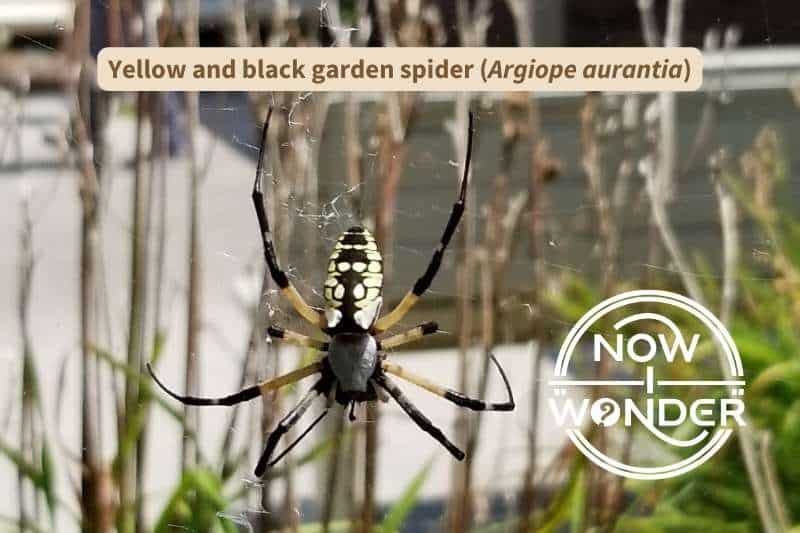
The female’s prosoma (essentially the head segment of the spider’s two body segments) is covered with dense white or silver hairs. The opisthosoma (the rounded back end segment of the spider) is smooth and black with two to four bright yellow or white spots down the center. The segments of the spider’s legs that connect to its body (formally known as the proximal femurs) are pale yellow-orange, while the distal leg segments are black. At rest, they hold their long, thin legs in an X-shape, with the two front and the two rear pairs positioned closely together to form the X.
This species spins extremely large webs which can span many feet. Individuals hang motionless from the center in a special, zig-zagged portion of the web called the stabilimentum (Rose, 2022). While scientists continue to research the purposes of this structure, one practical effect is that it breaks up the spider’s visual outline. Instead of seeing the gigantic black and yellow spider, a casual observer might just see a fuzzy shape.
Additionally, their webs can span many feet and each strand is so thin as to be nearly invisible. Therefore, it’s entirely possible to accidentally walk head first through an Argiope aurantia’s web. While walking through a spider’s web is never a pleasant experience, the experience is made much, much worse when the irate, eight-legged occupant is as large as a yellow garden spider.
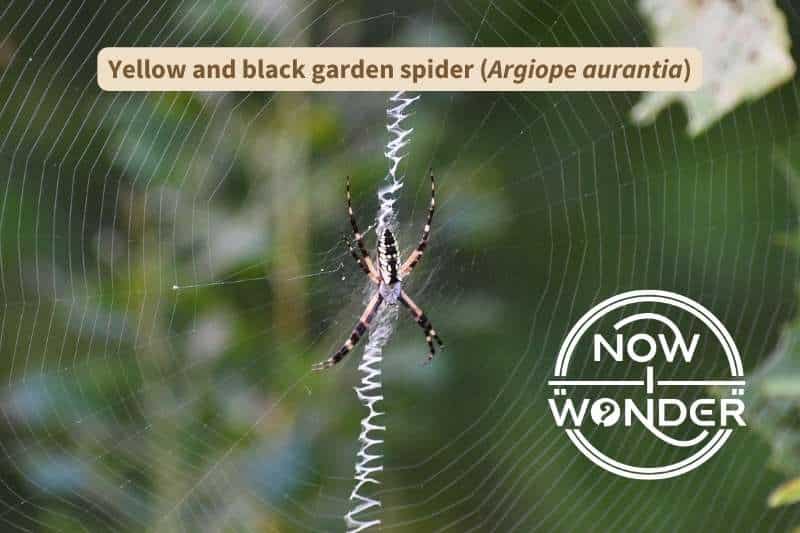
Rabid wolf spiders: NC’s biggest day-active wolf spider
While rabid wolf spiders (Rabidosa rabida) are not the largest wolf spider species living in North Carolina (females of five other species post longer total body lengths), they are one of the largest spider species the average person is likely to see.
Members of the ground active hunters guild, and the wolf spider family Lycosidae, females can reach 21.0mm (0.8in) in total body length (males average 12.0mm (0.5in) (Rose, 2022). These spiders do not usually enter buildings but are common residents of gardens, forested areas, and especially overgrown areas with tall grass.
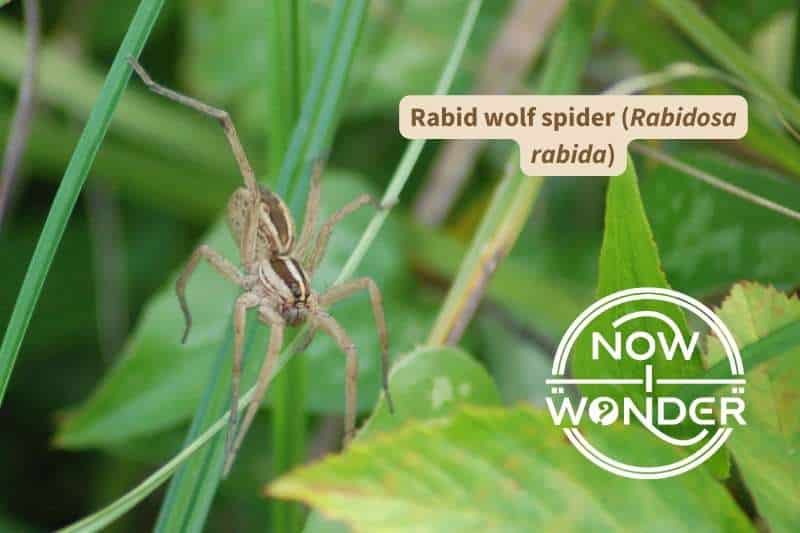
Their prosomas are dark brown with bright tan stripes down the center line and along both sides. This median stripe ends at the end of the prosoma, and the spiders’ color pattern reverses on the top of their opisthosomas with the center line being dark brown with tan chevron stripes edged with thin, dark brown stripes. Both body segments are covered in short hairs that give these spiders a velvety appearance if you look closely.
Rabid wolf spiders often go unnoticed, despite their large size and presence in many of the outdoor areas frequented by humans. Their high contrast brown and tan stripes break up their visual outline and can make them difficult to spot while motionless.
Unlike many of their cousin wolf spider species, Rabidosa rabida is active during the day. They hunt for food such as grasshoppers by waiting patiently for prey such as grasshoppers to wander close, then dash out, tackle the prey, and administer their killing bites. Rabid wolf spiders travel significant distances as they relocate throughout the day while hunting, so often the often the easiest way to realize you’re within inches of a rabid wolf spider is to look for movement.
Southern house spiders: NC’s biggest house spider
Southern house spiders (Kukulcania hibernalis) are the largest spiders residents of North Carolina are likely to see inside buildings. This species will often build their webs in small, tight spaces, such as cracks and crevices in buildings, sheds, barns, and garages. Members of the sensing web weaver guild of spiders and the crevice weaver family Filistatidae, females of this species can reach 19.0mm (0.7in) in total body length (males are smaller around 9.0mm (0.4in)) (Rose, 2022).

Female southern house spiders are basically jet-black, although some individuals can be a slightly paler dark grey. They have very long, slim legs and often rest in their webs with the first pair stretched directly in front of them, making them appear even longer.
Like all sensing web weaver spiders, Kukulcania hibernalis spins lines of spider web silk out from its hiding place or burrow. Each silk line acts as a trip wire; the spider waits patiently for an insect to accidentally brush against the line. The contact vibrates the strand and alerts the spider to the insect’s presence. At that point, the spider erupts from its lair and quickly grabs the hapless prey.
Marbled orbweaver spiders: Runner-up for NC’s biggest orbweaver
The marbled orbweaver (Araneus marmoreus) is one of the most common, and most easily spotted, spiders in North Carolina. Members of the orb weaver guild of spiders and family Araneidae, they are found in a variety of habitats, from forests to open edge areas, like along sidewalks and between bushes. Females of this species can reach 18.0mm (0.7in) in total body length, (males are smaller at approximately 6mm (0.2in)) (Rose, 2022).
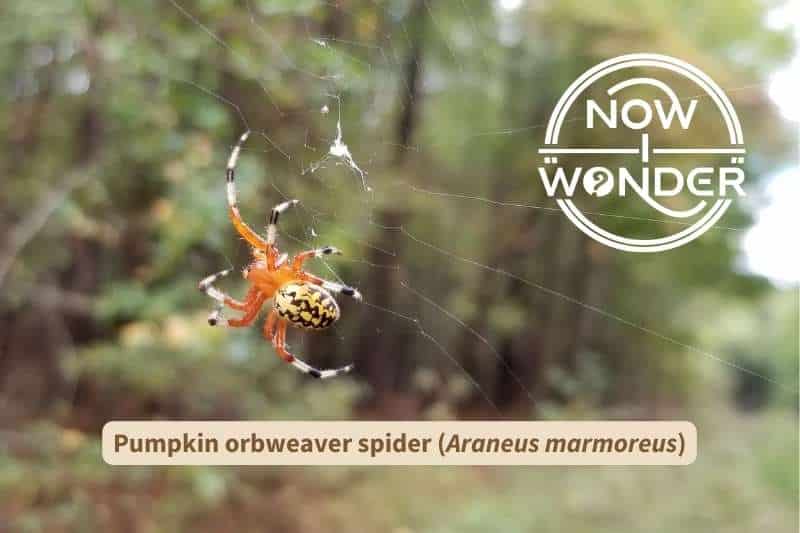
Like many orbweavers, female Araneus marmoreus are visually striking spiders. The prosoma, also known as the cephalothorax or even more simply as the spider’s head, is bright orange, and its hind end, formally called the opisthosoma, is pale yellow to orange and mottled with dark orange patches. The leg sections closest to the body are also orange, but the other segments are banded black and white.
The opisthosomas on this species are round, bulbous, and huge compared to their prosomas. This size difference can make these spiders look unbalanced, as though the weight of their back ends would be too much for their spindly legs to carry.
However, looks can be deceiving and these spiders are both agile and quick. They can spin a large web spanning several feet in a very short period of time and climb daintily over each strand without any difficulty at all.
Conclusion
The four spider species presented in this post represent the biggest spiders the average person is likely to encounter just by being outside in nature. While there are certainly larger spiders in the world, and even in North Carolina, there’s a huge difference between the biggest spider you never actually see, and the biggest eight-legged marvel hanging right in front of your face.
Related Now I Wonder Posts
For more information about spiders in general, check out these other Now I Wonder posts:
- What are wolf spiders?
- Jumping Spiders #1 – An Introduction
- Jumping Spiders #2 – A look at their incredible vision
- Jumping Spiders #3 – A detailed look at a special skill: Jumping
- Jumping Spiders #4 – As Predators
- Jumping Spiders #5 – As Prey
- Are spiders bugs?
- Do spiders have teeth?
- Do spiders have blood?
For more information about the biggest spider species in North Carolina, check out this other Now I Wonder posts “Meet the biggest spider in North Carolina“.
For more information about spider relatives in class Arachnida, check out these other Now I Wonder posts:
References
Bradley, Richard A.. 2012. Common Spiders of North America. Berkeley: University of California Press.
Rose, Sarah. 2022. Princeton Field Guides Spiders of North America. Princeton: Princeton University Press.

